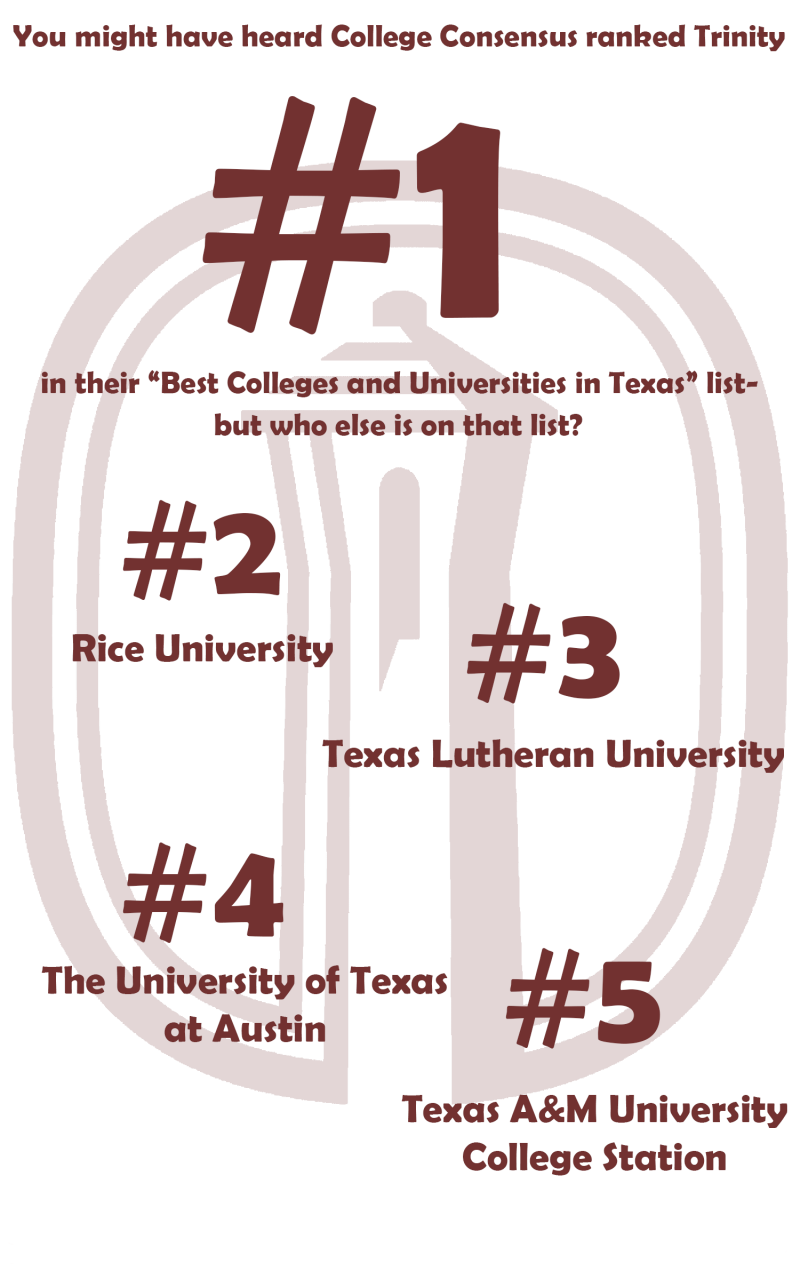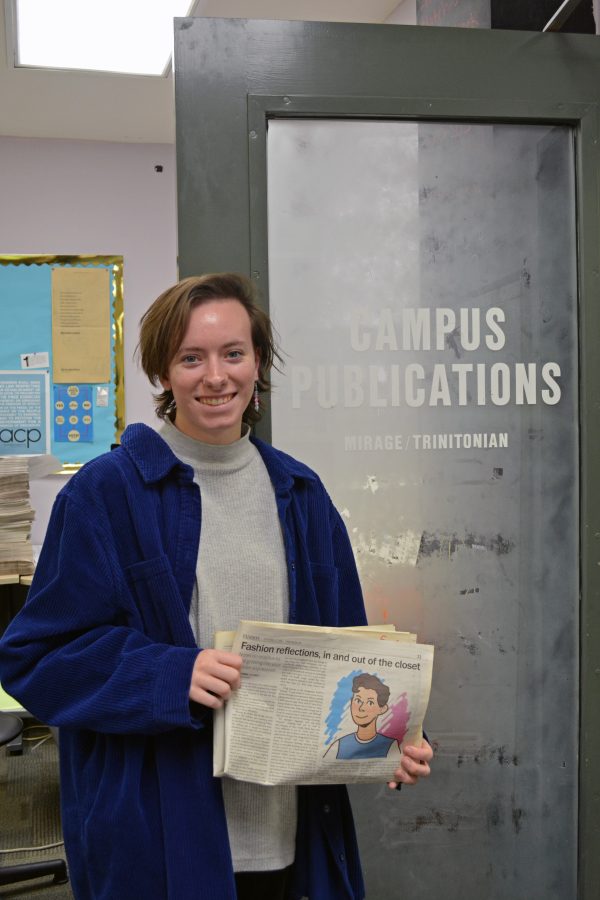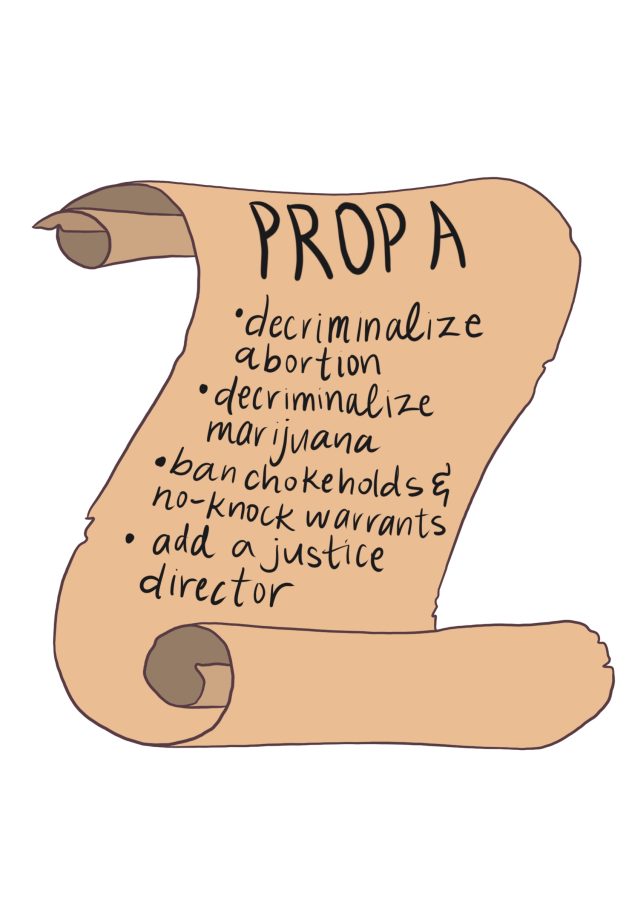College Consensus ranked Trinity University first on their list of “Best Colleges and Universities in Texas” and 49th on their list of “Best Colleges and Universities” this July, leading to an outpouring of student and faculty celebration online.
To configure their ranking, College Consensus combined and averaged data from other college ranking publishers to form a “publisher consensus.” Similarly, they collected student review data from multiple sources to produce the “student consensus.” Trinity’s publisher consensus was the highest on the list with a grade of 76.5 and had an above average student consensus of 74.4.
College Consensus configured its grades by averaging scores that had already been given to Trinity by outside sources. Jami Cunningham, institutional research analyst, is responsible for sending statistics and information about Trinity to the United States Department of Education. After that, college ranking institutions will use that information and their own algorithms to establish their own ranking.
“We turn in statistics to the federal government every year, and they get posted with everybody else and a lot of places will go in and take a look at us through that avenue and they’ll consider those numbers,” Cunningham said. “Those statistics are much more numbers — how many students come in, how many graduate, how many take out loans — that kind of thing.”
Trinity’s publisher consensus pushed the university to the number one spot. One source that raised the score was the U.S. News ranking that placed Trinity in the number one spot of “Best Regional Universities West Rankings.” In this ranking, Trinity is compared to other universities within the area and with a focus on undergraduate studies.
“All of the reviews are totally different, and they have their own methodologies and their own sources — the way they like to do things,” Cunningham said. “I think it’s good. Any more visibility for Trinity is a good thing. Somewhere like Trinity isn’t as well known as something like UT Austin or A&M, so it’s nice to have these rankings, so we can see where we fit in that — how we compare to those schools that we do know more about.”
Michelle Bartonico, assistant vice president for strategic communications and marketing, always expects college rankings to come September at the start of fall semester. Following the publication, Bartonico heard about the ranking through the monitoring service, Meltwater, used to capture online talk about Trinity.
“We have reports that are set up to pull anything that talks about Trinity, so especially because this was covered by city-wide CultureMap outlets in Houston and San Antonio, we kind of picked all of that up simultaneously,” Bartonico said. “It seems like over the last couple of years there have been new [college ranking] entrants into the market. College Consensus is in the mix, especially because they have that student survey component.”
Bartonico noticed a lot of feedback from various members of the Trinity community, including alumni, students and faculty. Additionally, the reactions to the ranking were far-reaching, getting reactions from across the state. Because of this, Bartonico believes the ranking through validation to members of the community.
“At the end of the day, people associate with brands because they think, ‘What does it say about me?’ When people actually share these types of things, it just tells us that people are thinking ‘This says about me that I made a good choice and that I came to the right institution, that I work here,’ ” Bartonico said.
Eric Maloof, vice president for enrollment management, is proud of the ranking, but does not consider it a goal of the university to achieve high rankings.
“We don’t play to the rankings, so we don’t play to the methodology of these rankings and say ‘Let’s change our mission and our core to improve our rankings.’ We’re not in that business. We’re in the business of serving students,” Maloof said.












